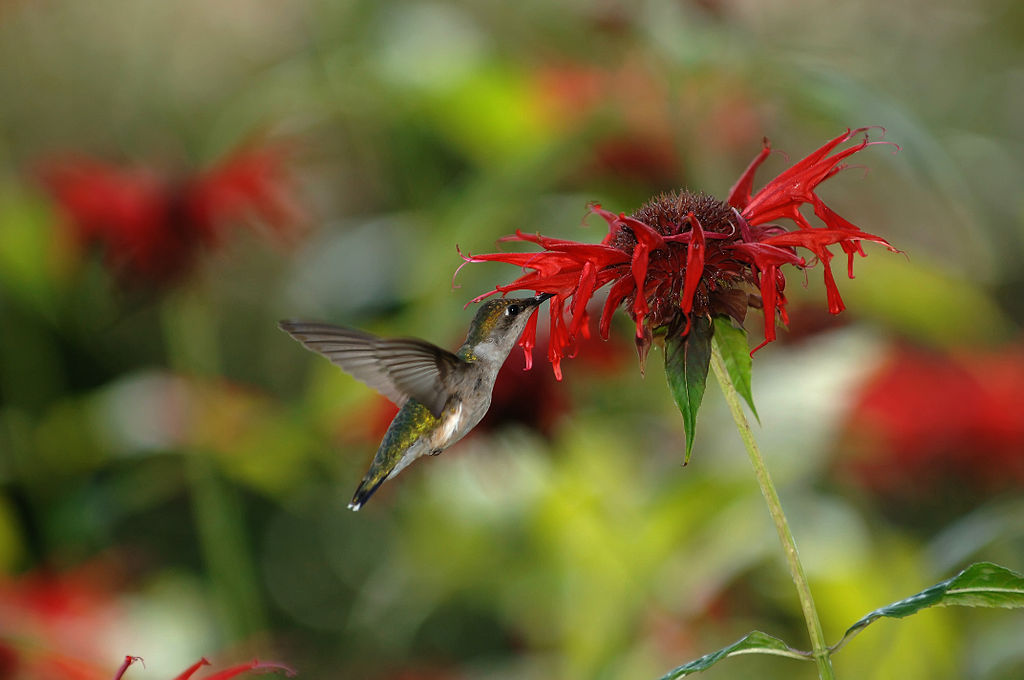
Independence Day is one of the quintessential summer celebrations, replete with good food, (hopefully) enjoyable company, and citywide displays of fireworks.
Here at the Schuylkill Center though, and indeed in many wild corners of our city, a very different kind of fireworks display has been happening for the past few weeks.
Milkweeds burst with pink globes and sprays of orange. Red and lavender beebalm florets arc across the meadow. Yellow sunchoke flowers shoot up and fade into brown seedheads. Fields progress from lush spring green to a crescendo of summer color, punctuated by a dance of bumblebees, flittering moths, and the iridescent otherworldly buzz of hummingbirds. Early July is the moment of Nature’s midsummer abundance.
It may come as a surprise, then, that many of the wildflowers that contribute to this yearly symphony of color and scent were once, themselves, a powerful political statement.
On a cold December evening in 1773, a group of angry Bostonians heaved tons of imported black tea into the harbor in protest at new taxes placed on it by Britain. Many American colonists who supported this action were suddenly faced with a moral dilemma: how can we still enjoy our tea if we’re boycotting it? Tea was culturally foundational in a way that is hard for us to imagine today. An empty teapot was out of the question, even for the most ardent supporters of independence.
The answer? Look to the forests and fields.
For people in the Carolinas, there was yaupon (the unfortunately named Ilex vomitoria) – a native holly whose leaves brew a delicious, caffeinated beverage. But for northern colonists, who did not have access to any native caffeine-producing plants, it was the flavors and aromas of native wildflowers that appealed most.
‘Liberty Tea’ became the term given broadly to a number of native wildflowers and shrubs whose aromatic foliage and flowers made sumptuous, spiced teas. Colonial women coursed the countryside, harvesting and cultivating flowers and wild herbs for their now-politicized teapots. The use of these herbs was a clear signal to neighbors, friends, and family as to which side of the political divide they stood on. To find the best species for this purpose they followed the example of Native peoples who had enjoyed brewing with the best native plants for millennia.
Sweet goldenrod (Solidago odora) was one of these favored plants. Leaves harvested before the plant blooms can be dried and stored for long periods, and used to brew an anise-scented tisane. Unlike its weedier relatives, sweet goldenrod does not spread aggressively in the garden and still supports incredible numbers of native pollinators with its late-season spray of yellow blossoms.

Another popular Liberty Tea was scarlet beebalm (Monarda didyma), also known as wild bergamot or Oswego tea. A host for orange mint and hermit sphinx moths, its shock of red tubular flowers burst forth in late June, providing an irresistible sip of nectar to hummingbirds and butterflies. Hummingbirds, indeed, seem to have good taste: a small handful of those same flowers can be added to a teapot to make a refreshingly aromatic summer beverage.
Colonial women favored a wide range of brewable wild plants to support the boycott and create a new culinary culture of resistance. New Jersey tea (Ceanothus americanus) got its common name during this time because of its popularity as a Liberty Tea. This nitrogen-fixing plant is a low shrub, only growing a couple feet tall, with wintergreen-flavored leaves and creamy white flower clusters that are particularly attractive to moths and butterflies.
The plants that our forebears imbibed are not just an historical curiosity to make into a tisane or herbal iced tea – they are also crucial food sources and waystations for some of the most sensitive creatures that we share this land with.
Whether or not you are of the patriotic bent, planting a Liberty Tea garden is a great way to ensure that you have delightful, historic wild brews available for your July 4th cookout each year, while also providing year-round habitat to native pollinators and a sumptuous sip for migrating hummingbirds and butterflies looking for a rest and a snack on their intercontinental journeys. Early colonists reframed these native plants into a political statement about an independent future. For us, planting native species is an equally powerful statement: one that speaks of our commitment to a livable future in a world that relegates these lifegiving plants to the margins. So this Independence Day weekend, after the guests leave and the food coma wears off, consider planting a Liberty Tea garden for next year. After all, what better way to honor our country’s birth than by celebrating its natural splendor, and perhaps yield a tasty brew in the process?
By Max Paschall, Native Plants Assistant
